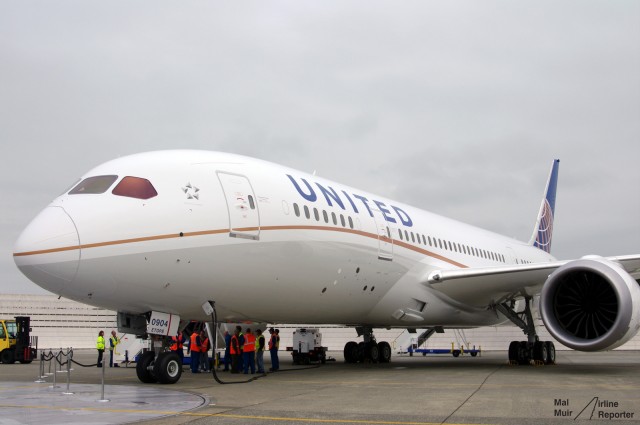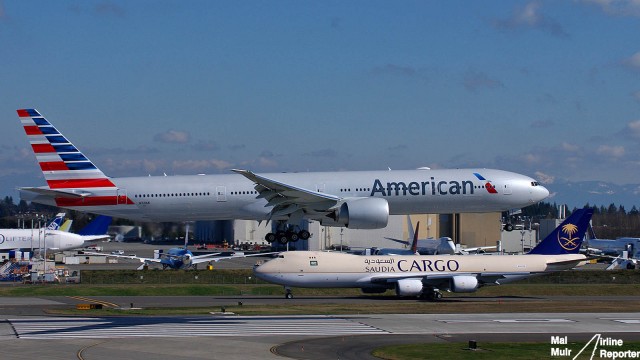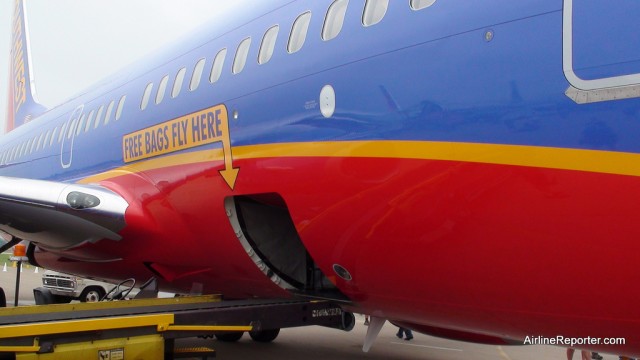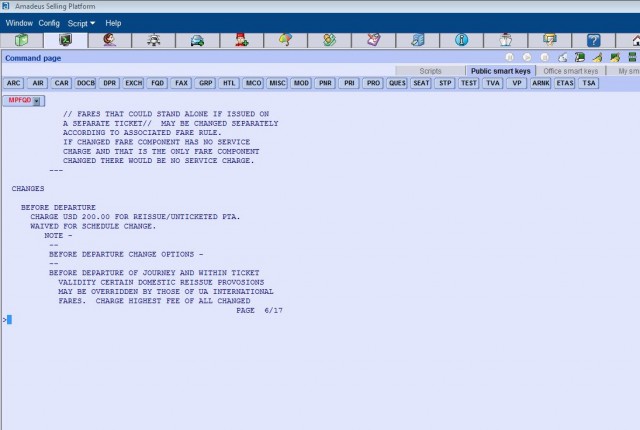
United Airlines First Boeing 787 on Launch Day at the Boeing Factory in Everett. Phone: Mal Muir airlinereporter.com
Recently United Airlines decided to increase their change fee on all domestic bookings from $150 to $200 per person. US Airways followed suit shortly after. Eventually Delta & American matched. With those change fees in mind, it got me thinking, “where is the spectrum of these fees in the US right now?”
Before we look at all the change fees each airline charges, we first need to look at what a change fee is and why airlines charge them. A ’œChange Fee’ to the airlines is a fee that is charged when you need to change the date or time on your flight booking. On heavily discounted airfares, changes are restricted so that you can be given the cheapest price possible. At least’¦ that’s the idea. In essence this is a fee charged by the airline, as a penalty to you for changing your mind.
Changing the airfare on the airline’s end probably doesn’t cost them much, if anything. In this day and age of overselling most flights, the airline has probably already sold it within seconds of your change.
But look at it from the other point of view. An airline wants to make sure that they keep the airfares as low as possible to keep people actually buying tickets. Why charge a higher fare to everyone in case they do change? Why not remove that ’œbuffer’ in the fare, create a change fee and charge to those who actually make a change? Sure the consumer has to pay an extra amount but overall fare for everyone else is lower.
With most airlines, not only do you have to pay a large change fee, but also any fare differences as well. The fare difference refers to the fact that you need to pay the difference between what you paid for your flights and what is best available on the flight you want to change to. If the flight is less, or the same, generally you would only pay the fee. If your new flight is higher you pay the fee & the extra on top.
BONUS: Should Airlines Refund Tickets in Cases of Death, Illness or Running Late? I Say Nay!
Here is the airline breakdown for the majority of domestic airlines in the USA. The fee situation is based on a restricted economy domestic ticket; fees for international tickets vary highly (depending on lots of different factors). This is also based on fees prior to 24 hours of your flight. Inside the 24 hours these fees are known as ’œSame Day Change’ and that is a whole other story.
- United Airlines – $200
- US Airways – $200
- Delta – $200
- American Airlines – $200
- Spirit – $115 ($10 higher if over the phone)
- Virgin America – $100
- JetBlue – $100
- Frontier – $100
- Air Tran – $75
- Alaska Airlines – $75 (Plus an Extra $25 if you change over the phone)
- Allegiant – $50
- Southwest – $0
What the above list shows is that the legacy/big 4 airlines all charge the same fee amount. When you hit the smaller airlines/low cost carriers that’s when things start to change quite a bit. There are some commonality among the other airlines (with Virgin, JetBlue & Frontier all charging the same) but there are a few surprises as well.
Since Allegiant is known for rock bottom prices and for charging fees for everything, one might have excepted their fee to be higher. Southwest uses the no change fee as one of their big selling tools; however Air Tran charges $75. Considering they are completing their merger, this can be confusing for some passengers.
Now that you know what the airlines charge, how do you avoid the fees? Well the easiest way: don’t change your plans. If you can’t do that there are a number of ways, though each airline is different. For some airlines (like Spirit) you can’t avoid the fee. For others purchasing a fare in a higher cabin (like First Class) or higher airfare would avoid the fees. But this could be extremely costly possibly hundreds more up front.
For other airlines being an elite member of their frequent flier program could allow you to change your flights for free. Changing your booking online vs. over the phone can make a different of cost (Alaska & Spirit), where changing online is cheaper.
Two airlines offer a special add on to your airfare when booking that can allow you to change for free. American Airlines offers the ’œChoice Essential’ airfare. An additional $68 on any round trip airfare allows you to avoid the costly change fee. So if you know from the outset you may have to change, this is a good option as you are only paying about 1/3 the cost. However, that additional cost also includes your first checked bag (normally $50 on a round trip flight) & priority boarding ($18). Extremely good value for money, especially if you are checking a bag.

An American Airlines 777 in the New Livery Touches down as a Saudia Cargo 747-8F taxi’s by – Photo: Mal Muir | AirlineReporter.com
Allegiant offers the ability to add on ’œTrip Flex’ for an additional $11.50 per flight. Essentially you are waiving your change fee, by prepaying another fee in advance. Unlike American, where you receive extra benefits, you only receive the waiver with Allegiant. In both cases only the fee itself is avoided, you still need to pay the fare difference that might apply.
It is common among airlines to have these fees listed in very hard to find places. Some airlines (United, American) did not even list their change fees on their website at all using a disclaimer that as ’œeach fare is different, each fee is different’ however they would be displayed during the booking process (more than likely using the terminology ’œFare Rules’).
The whole change fee situation is a bit like a game of craps, you roll the dice when you’re buying that fare. Are your plans going to change? Then buy the protection of a higher fare (or the change fee waivers with American or Allegiant). Are your plans locked in? Stay with the low fare. Sometimes you win, sometimes you lose. One thing for certain fees are here to stay, the least you can do is try your best to not pay the most.
 |
This story written by…Malcolm Muir, Lead Correspondent. Mal is an Australian Avgeek now living and working in Seattle. With a passion for aircraft photography, traveling and the fun that combining the two can bring. Insights into the aviation world with a bit of a perspective thanks to working in the travel industry.@BigMalX | BigMal’s World | Photos |

